CONTACT
101 North Grape Street
Medford, OR 97501
Phone: 776.8590 or 800.636.7450
Fax: 541.779.2018
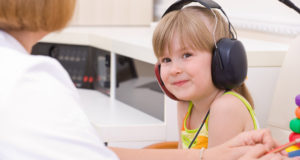 Audiological Services
Audiological Services
A full range of diagnostic hearing services are provided for children ages birth to high school graduation, including pure tone air and bone conduction testing, visual reinforcement and behavioral observation sound field audiometry, speech audiometry, acoustic immittance testing, otoacoustic emissions testing, hearing aid evaluation and ear mold fitting, custom made swim plugs, sound field amplification and personal FM systems. Participating counties: Jackson.
Consultative services are available for educational staff and families, including topics such as: educational impact of hearing loss, hearing aids, cochlear implants, personal FM units, and sound field amplification.
Referrals
Pre-school children may be referred by parents or physicians. School-age children may be referred through their school district.
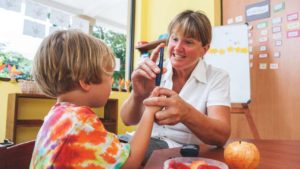 School Nursing Services
School Nursing Services
Participating counties: Jackson and Josephine.
Students attending schools may have a variety of chronic and acute health conditions, such as seizures, asthma, diabetes, and severe allergies. Some students may require medical assistive devices and procedures, such as gastric tube feeding, oxygen administration, suctioning, or nebulizer treatments. School nurse consultants help school districts meet the needs of these students and maintain compliance with Oregon rules and statutes, working under the requirements of both the Oregon Board of Education and the Oregon State Board of Nursing.
View School Nurse Consultant Services
Staff Trainings – Staff trainings can include medication administration, severe allergic reaction, severe hypoglycemia/Glucagon, seizure management, asthma, shunt emergencies, diabetes, and other health conditions. CPR/First Aid training using the Medic First Aid system is also available.
Nursing Delegation – Certain nursing tasks such as administration of oxygen or gastric tube feedings may only be instructed, delegated, and supervised by a registered nurse.
Childhood Diabetes Database Reporting – This program, implemented in 2007, requires schools to report information on children under 18 who have diabetes. Although this is a district responsibility, School Nurse Consultants can provide guidance.
Nursing assessment and development of Individual Health Plans (IHPs) or Emergency Action Plans – Nurse consultants are vital to planning for management of health needs and health emergencies in the school setting. The nurse will assess the individual student and develop a plan specific for that student’s needs.
Participation in IEP and 504 team planning for students with special health needs – Nurse consultants can help to identify and lessen health barriers to learning, help to develop IEP goals that provide for the required health needs of students, and should be informed of and invited to annual review meetings.
Medication Review – Nurse consultants can review medication storage and documentation in schools to assure that procedures are compliant with the law.
Vision Screenings – Nurse consultants can coordinate vision screening.
Health Case Management – For students with complex medical situations, nurse consultants can provide information regarding resources and programs that may assist students and families.
For more information, email:nursing@soesd.k12.or.us or call 541-776-8590 x3110.
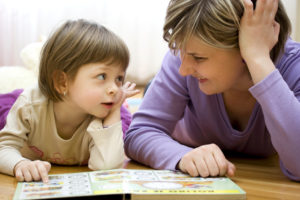 Speech/Language Services
Speech/Language Services
SOESD provides an itinerant speech-language pathologist in each of the district’s schools which request this service. Services provided by the Speech and Language Program are customized to meet the requests of each school. Therapy is individualized to address the unique communication needs of each student. Specific communication disorders include articulation, voice, fluency, and language. A licensed speech/language pathologist, a speech/language pathology assistant, or an educational assistant may provide a variety of services to each school including direct student instruction, planning and development of therapeutic interventions, working with other staff and parents to develop activities, and providing technical assistance to solve short-term communication problems.
The speech/language pathologist may serve as a consultant to regular education teachers and provide direct therapy to students in both regular and special education classrooms. The proportion of time spent in each of these roles and locations where direct student services are delivered depends on the philosophy, goals, and procedures of each school. The speech/language pathologist plays a significant role in the multidisciplinary team by providing relevant information upon which the team determines the existence of any disability and develops and implements a specially designed program.
SOESD Speech Pathologists also provide services to the STEPS and STEPS Plus programs, which are programs run by the SOESD that serve students with multiple and severe disabilities from resident districts. In addition to the services listed above, the Speech Pathologist serving these programs may provide therapy and/or consultation on Pre-linguistic Communication, Feeding and Swallowing, Augmentative Communication, and other non-verbal communication.
Participating counties: Jackson and Josephine. For more information, email: speech@soesd.k12.or.us or call: 541-776-8551.
View FAQs
Q: What are some specific types of communication disorders?
A: Communication disorders can result in problems with:
- Articulation – difficulty making speech sounds or to speak clearly
- Fluency – stuttering
- Voice-hoarseness, loudness, nasality, pitch (too high, too low, monotone)
- Language – understanding and expressing thoughts and ideas
- Social Communication-peer interaction, turn taking, asking and answering questions, conversation skills
- Feeding – chewing and swallowing, taking adequate nutrition for growth
- Inability to speak-no spoken language
Q: What are the signs of a communication disorder?
A: A communication disorder might be present when a person’s speech or language differs from his or her peer group, is difficult to understand, when talking is avoided or when ineffective communication behaviors result in frustration. As all academics are based on language, failure to succeed in literacy or math might indicate a communication disorder.
Q: What can you do if you suspect a communication disorder?
A: If you suspect a communication disorder contact your child’s teacher, the school speech language pathologist or your local school district. These service providers will help determine if an evaluation is needed.
Q: What can a speech language pathologist do to help students with Communication disorders?
A: A speech language pathologist can work with classroom teachers and students individually or in groups to improve communication skills necessary to succeed in school and everyday life. Services are provided to help children overcome their disabilities and become more effective communicators, problem-solvers and decision-makers.
View Referral and Eligibility Information
Referral
Referrals may be generated by a parent, a student, a classroom teacher, a special educator or a physician who is familiar with the child.
According to IDEA rules and regulations, students aged 5-21 must be evaluated by a licensed Speech/Language Pathologist in order to determine eligibility for special education based upon a communication disorder or autism spectrum disorder.
The IEP team (inclusive of parents) meets to discuss concerns, review records and decide upon the most appropriate option:
- No further action is needed at the time
- Implement additional classroom modifications and strategies for a designed time and reconvene the team to evaluate progress/effects and again determine the course of action.
- A communication evaluation conducted by a licensed SLP.
Evaluation
The evaluation will include standardized tests, observations, communication samples and interviews with staff, parents and/or the child.
Listed below are some common terms related to communication:
- Reception involves accurately hearing sounds and words as well as understanding their meanings. (receptive)
- Expression generally considers one’s ability to formulate and share coherent strings of information. (expressive)
- Fluency is the general ease with which we communicate. Variations may include sound and/or word repetitions, sound prolongations, unusual breathing/speaking patterns or related changes in movement of facial musculature. Depending on the degree and frequency of occurrence, these characteristics may be referred to as stuttering.
- Speech Sound Production, also referred to as
- Articulation or Phonology, addresses an individual’s ability to produce the sounds of language. Overall intelligibility of a speaker is determined by how accurately they can produce our language’s sounds in various word positions (beginning, middle, end) and by how they maintain integrity of sound production (intelligibility) during conversational speech.
- Comprehension involves listening to the language of others and constructing meaning from these communications. When we “comprehend”, we listen and understand what the intent of someone else’s words convey. Comprehension may refer to processing of either verbal input or printed/written input.
- Voice or vocal quality should be clear and age-appropriate without distracting acoustic features such as hoarseness (stridency), breathiness, or obvious struggle.
- Pragmatics provides us with conversational rules. We change the quantity and quality of our talk based upon the perceived needs of our talking partners. We notice breakdowns and attempt repairs.
- Semantics refers to the meaning of words, referential definitions, as they occur in context.
- Morphology focuses on the smallest word units such as ‘s’=plural, “un”-not.
Syntax addresses between-word grammar structures such as rules of subject-verb agreement.
According to IDEA law, at least one standardized assessment tool must be administered to assess eligibility for communication disorder. Scores will serve as one indicator as to how your child’s communication skills performance compares to that of same-aged peers. Scores that are significantly (one and a half or more standard deviations) below those of same age peers may indicate a need to consider a communication disorder. Tests and subtests measure the child’s ability to understand, related to and use of language and speech clearly and appropriately. The team has agreed that the following will be administered as appropriate:
- Peabody Picture Vocabulary Test-IV (receptive)
- Expressive Vocabulary Test-2 (expressive)
- Test of Problem Solving (synthesis/analysis).
- Clinical Evaluation of Language Fundamentals-IV (receptive and expressive subtests)
- Test of Language Development -4 Primary/Intermediate (receptive and expressive)
- WORD Test Elementary -Revised (receptive and expressive)
- WORD Test Adolescent – 2 (receptive and expressive)
- Preschool Language Scale-4- (receptive and expressive)
- Bracken Test of Basic Concepts (receptive and expressive)
- Test of Auditory Comprehension of Language (receptive)
- Test of Semantic Skills, Primary and Intermediate (receptive/expressive)
- Functional Communication Profile -Revised (functional language skills)
- Goldman-Fristoe Test of Articulation -2 (sound production)
- Arizona Articulation Proficiency Scale-3rd revision (sound production)
- Assessment of Phonological Processes R (sound production)
- Photo Articulation Test (sound production)
- Stuttering Severity Instrument -3 (fluency)
In addition to standardized assessment, the following procedures should be a part of a communication evaluation:
- Hearing Screening which includes pure tone hearing screen to assess bilateral sound reception at a basic level and a tympanic screening which screens middle ear functioning.
- Oral Motor Examination which will reveal any structural or functional abnormalities that may interfere with speech and/or feeding/swallowing competencies.
- Parental interview (regarding developmental and communication skills)
A child’s functional or spontaneous competencies must also be considered. Observation and analysis of the child’s communication competencies in his/her educational settings may include sampling and analysis of:
- Spontaneous, conversational language
- Spontaneous Speech
- Literacy competencies (sound awareness, spelling, reading, reading comprehension, writing content and organization)
- Keyboarding competence
- Ability to attend and respond to directions as well as to “filter out” extraneous input
- Planning, organization, reasoning, and problem solving related to curriculum (referred to as “Executive Functioning”)
- Memory and recall of general information, stories, poems, songs
- Pragmatic Communication (ability to coordinate conversational relationships)
- Ability to convey information (verbal or written) in a well-organized, cohesive manner.
Eligibility
Upon completion of evaluation the team will convene again to review results. Areas the team can consider for a communication disorder include; Fluency, Voice, Phonology or Articulation and Language which includes; syntax, morphology, pragmatics or semantics. For a language disorder, the team has to determine if the disability is the result of another disability (such as intellectual disability, autism, etc.) before eligibility can be determined. The team will further need to determine that the disability has an adverse impact on education. If the team determines that the student qualifies for special education, an IEP will be developed.
View Resources
The Speech, Language and Hearing Program offers these suggested links for parents and professionals to obtain further information about communication and hearing disorders. We have chosen these professional organizations or university bases sites as starting points for connections with other links. We realize that anyone can put anything on the internet and that information you may seek through a general search may or may not be accurate. It is our hope that by accessing these links you may find valid and up-to-date information.
American Speech-Language and Hearing Association
The homepage features information for professionals as well as parents. On-line brochures and links to other sites are easily accessible.
National Institute on Deafness and Other Communication Disorders Clearinghouse(NIDCD)
The NIDCD Clearinghouse responds to the needs of health Professionals, patients, people in industry, and the public by responding to written and telephone inquiries, distributing health related materials, and maintaining a computerized database.
Parents Helping Parents
PHP is a parent-directed family resource center serving children with special needs, their families, and the professionals who serve them. It provides a variety of services, including support in the following languages: Japanese, Spanish, and Vietnamese
Oregon Technology Access Project (OTAP)
The Oregon Technology Access Program (OTAP) provides training, information, technical assistance and resources regarding the uses of technology for children with disabilities. OTAP services are available to anyone concerned with the needs of Oregon children with disabilities from birth to age twenty-one. The program is sponsored by the Oregon Department of Education (ODE).
View Self-Help Groups
The following organizations sponsor self-help groups for people with speech, language, and/or swallowing disorders.
The Arc
1825 K Street, St. 1200
Washington, DC 20006
800-433-5255
http://www.thearc.org/
Autism Society of America
4340 East-West Hwy., St. 350
Bethesda, MD 20814
800-328-8476
http://www.autism-society.org/
The Brain Injury Association
1608 Spring Hill Road, ST 110
Vienna, VA 22182
703-761-0750
http://www.biausa.org/
The Childhood Apraxia of Speech Association
416 Lincoln Ave., 2nd Floor
Pittsburgh, PA 15209
412-343-7102
e-mail: helpdesk@apraxia.org
http://www.apraxia-kids.org/
Learning Disabilities Association of America (LDA)
4156 Library Road
Pittsburg, PA 15234-1349
412-341-1515
http://www.Idamerica.org
National Aphasia Association
350 Seventh Avenue, St. 902
New York, NY 10001
212-255-4329
http://www.aphasia.org/
National Coalition on Auditory Processing Disorders
http://www.ncapd.org/
National Easter Seal Society
233 S. Wacker Drive, ST. 2400
Chicago, IL 60606
800-221-6827
http://www.seals.org/
National Stuttering Association
119 W. 40th Street, 14th floor
New York, NY 10018
800-937-8888
http://www.nsastutter.org/
The Stuttering Foundation
P.O. Box 11749
Memphis, TN 38111-0749
800-992-9392
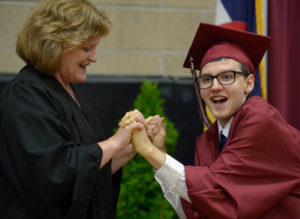 Youth Transition Program
Youth Transition Program
The Youth Transition Program (YTP) is a comprehensive transition program for youth with disabilities operated collaboratively by Vocational Rehabilitation Services (VR), the Oregon Department of Education (ODE), the University of Oregon (U of O), and local school districts statewide in Oregon. The purpose of the program is to prepare youth with disabilities for employment or career related post-secondary education or training.
Participants: YTP serves youth with disabilities who need additional support, beyond the services typically offered though the general or special education program, to achieve their secondary and post-secondary employment and continuing education goals. YTP youth are representative of all youth with disabilities nationally with respect to gender and primary disability categories; however, the majority of youth in the program experience a number of additional individual, family, or school system barriers such as poor academic skills, limited social and independent living skills, negative job experiences, and low levels of family involvement or support. Over 50% of youth currently served through the YTP live in low income families.
Pre-Employment Transition Services: Workforce Innovation and Opportunity Act (WIOA) – Creates the expectation that VR in collaboration with local educational agencies (LEA) shall provide or arrange for the provision of pre-employment transition services for all students with disabilities in need of such services who are eligible or potentially eligible for VR services. The 5 pre-employment transition services offered are:
- Job exploration counseling
- Work-based learning experiences, which may include in-school or after school opportunities, or experience outside the traditional school setting (including internships), that are provided in an integrated environment to the maximum extent possible
- Counseling on opportunities for enrollment in comprehensive transition or post-secondary educational programs at institutions of higher education
- Workplace readiness training to develop social skills and independent living
- Instruction in self-advocacy which may include peer mentoring.
For More information or to schedule an appointment to meet call or email:
Transition Specialist/YTP at 541-776-8551
 Psychological Services
Psychological Services
School Psychologists are uniquely qualified members of school teams that support students’ ability to learn and teachers’ ability to teach. They apply expertise in mental health, learning, and behavior, to help children and youth succeed academically, socially, behaviorally, and emotionally. School Psychologists partner with families, teachers, school administrators, and other professionals to create safe, healthy, and supportive learning environments that strengthen connections between home, school, and the community. SOESD’s current school psychologist team consists two in-person and five virtual school psychologists totaling 6.5 Full Time Equivalent to serve Butte Falls, Eagle Point, Grants Pass, Klamath Falls City, Klamath County, Pinehurst, Prospect, and Rogue River School Districts. Services are also provided to other programs, including STEPS, STEPS PLUS and Long-Term Care and Treatment classrooms in Medford and Grants Pass. For more information, email: psychology@soesd.k12.or.us or call 541-776-8590 X 3119.
View Eligibility and Referral Information
Referrals for school psychology services are typically generated by schools’ student study teams (SST). Parents, teachers, special educators, administrators, and sometimes physicians refer when they suspect the child may have an educational disability. A team, including the parents, will meet to discuss the nature of the concern, the child’s school history and current progress to determine the most appropriate course of action. Possible outcomes may include recommendations for classroom modifications or a full psycho-educational evaluation.
Evaluation
If an evaluation is recommended, the school psychologist will follow guidelines established by IDEIA and the OR State Department of Ed. A developmental history, educational file review, parent/teacher/student interviews, observations, and standardized assessments of intellectual ability, adaptive behavior, behavioral functioning, or emotional status may be included. Evaluations are designed to provide information to help identify possible educational disabilities including learning disability, emotional disturbance, autism spectrum disorder, intellectual disability or other health impairment impacting education. Written consent of the parent is always required before evaluation occurs.
Eligibility
Upon completion of the evaluation, the school psychologist presents their findings to the educational team, including the student’s parents and teachers. If the child demonstrates characteristics of an educational disability and that disability adversely impact their education, and individualized education plan will be developed.
If the educational team determines that the student does not have an educational disability, the school psychologist may continue to consult with the regular education teacher to identify possible accommodations which address the student’s learning profile.
The eligibility requirements for each educational disability in Oregon is described on the Oregon Department of Education (ODE) website. To talk to a specialist concerning any of these disabilities, call the Oregon Department of Education at 503-378-3600 x2320.
STEPS Plus
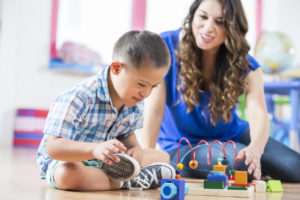 Students enrolled in this program represent a distinct population of students, who present difficult and challenging behaviors. They have multiple, severe disabilities, cognitive deficits and/or significant medical/health needs. The disabilities may include developmental disability, hearing and vision impairment, communication disorder, orthopedic impairment, traumatic brain injury, other health impairment, autism and behavioral disorders. Students’ projected achievement level does not typically exceed 2nd grade benchmarks. These students lack social, behavioral and communication skills required for success in other self-contained life skills classroom placements. Their
Students enrolled in this program represent a distinct population of students, who present difficult and challenging behaviors. They have multiple, severe disabilities, cognitive deficits and/or significant medical/health needs. The disabilities may include developmental disability, hearing and vision impairment, communication disorder, orthopedic impairment, traumatic brain injury, other health impairment, autism and behavioral disorders. Students’ projected achievement level does not typically exceed 2nd grade benchmarks. These students lack social, behavioral and communication skills required for success in other self-contained life skills classroom placements. Their
behaviors are so severe that they require a staffing ratio of 1:1. Some of the students may require a 2:1 or higher staffing ratio in order to keep them safe and provide safety for the staff and other students.
Programs for these students will focus on determining the cause of severe behavior and teaching skills to communicate, self-regulate and manage behaviors in a more positive way. The program is characterized by a low student-staff ratio, individualized special instruction, special equipment and materials, and a team of specialists providing additional instruction, therapy, staff training and consultation services. STEPS PLUS uses evidence based curriculum to teach fundamental behavioral communication goals (i.e. using picture cues to request), and it implements sensory strategies to help children tolerate typical environmental stimuli and adult-supported behavioral regulation. STEPS PLUS programming does not include ‘levels’ type of behavioral system appropriate for students with more sophisticated cognitive capacity. Focus is on teaching behavior management, social and communication skills to students, so they can function more independently and be placed eventually in a less restrictive environment, whether it is a regular self-contained life-skills class, community, recreation or a work program. It is understood that some students may continue to require the highly structured environment and 1:1 staffing to be successful in the learning environment.
For more information, email: Andree Johnson or call: 541-776-8551.
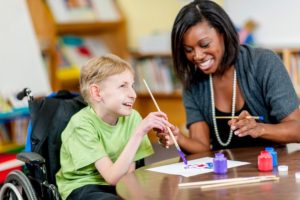 STEPS
STEPS
STEPS serves students (ages 5-21) with severe and/or multiple disabilities, including intellectual disability, autism, orthopedic, traumatic brain injury, and medical health needs. The program is characterized by a low student:staff ratio, individualized special instruction, a modified curriculum, specialized equipment and materials, and a team of specialists providing additional instruction, therapy, and staff training and consultation to augment the variety of classroom-based services. Homebound services to STEPS-eligible students and extended school year services are provided. Specialists include nurses, speech/language pathologists, Regional service providers, and vocation/program specialists as well as supervisors who provide training and technical assistance to ESD and building staff. Districts provide classroom space/facilities, school day transportation, building-level administrative support, and custodial services.
STEPS Program Differentiated Models
The STEPS Program is now serving students in two differentiated classroom models which will focus more specifically on the individualized needs of students:
- STEPS CARE classes, and
- Transition class
For more information, email: andree_johnson@soesd.k12.or.us or call: 541-776-8551.
View Models & FAQs
| Model: | CARE (Comfort, Attention and Response to Emergencies) |
| Purpose: | To educate students with multiple/severe disabilities who have medically involved conditions in an environment that supports their independence in daily living, social, and motor activities |
| Focus: | Visual, motor, communicative, and intellectual development |
| Specialists: | Feeding and Swallowing Specialist, Augmentative Communication Specialist, Speech/Language Pathologists, Occupational Therapists, Physical Therapists, Nurses, Vision and Hearing Itinerant Teachers, and Autism Consultants |
| # Educational Assistants | Staffing will reflect the supports needed by each student. The staffing ratio is approximately 1 Assistant per 2 students |
| Curriculum | Medically supportive environment with focus on regularly scheduled nursing procedures, emergency protocols, medication administration and feeding/swallowing protocols; consistent use and application of visual supports and assistive technology to support student independence in academics, social and vocational development |
| Model: | Transition |
| Purpose: | To educate post-high school age students with multiple/severe disabilities in order to support their education, employment, and independent living needs as they move into adulthood |
| Focus: | Transition services |
| Specialists: | YTP (Youth Transition Project) Specialist, Nurses, Occupational and Physical Therapists, Speech Language Pathologists, Feeding and Swallowing Specialist, Augmentative Communication Specialist, Vision and Hearing Itinerant Teachers, and Autism Consultants |
| # Educational Assistants | 1 Assistants per 3 students |
| Curriculum | Focus on independence, functional life skills, and job experiences; consistent use and application of visual supports and assistive technology to support student independence; Person Centered Planning; integration with peers and community members to increase social, recreation, and leisure skills; collaboration with other service agencies; involvement of parents, family members, and other natural support systems |
You may hear staff refer to the STEPS Program in general or refer to your child’s classroom as the STEPS CARE classroom, or the STEPS Transition classroom—all classroom titles falling under the umbrella of the STEPS Program.
Benefits of the differentiated models include more direct related service/special time for student instruction and staff training and support, and more focused curriculum and behavioral/Intervention approaches to address students’ individualized needs. Careful attention is taken to involve students in routine school activities and the regular education curriculum, and in Transition, appropriate community-based, life skills instruction and activities. In all STEPS classroom models, the IEP is the guide for student planning.
Q: Why are you making these changes? Who made the decision to change?
A: An examination of special education services, service delivery models, and costs by area superintendents and special education administrators resulted in decisions by some school districts to provide services to STEPS-eligible students in district-operated classrooms (instead of ESD-operated STEPS Program classrooms). The smaller number of students served by the STEPS Program led to restructuring the STEPS Program to serve groupings of students with more similar needs and patterns of behavior and development.
Q: Will I have to transport my child?
A: No. Special education transportation will be provided as it has been. Your resident school district is responsible for this element of your child’s special education services.
Why are some children going to STEPS classes and some going to a district class?
A: School districts make decisions each year about which special education services/classes they will provide directly and which they will receive from SOESD. Changes in service delivery by some school districts led to the changes in STEPS Program class locations as well as the differentiated models approach.
Q: Why is my high- schooler going to a middle school?
A: Because of the reduced numbers of students being served in the STEPS Program, it was necessary to change the age groupings to elementary (Kindergarten through Grade 6) and secondary (Middle and High School).
Regional Programs for Low Incidence Disabilities
SOESD acts as one of Oregon’s eight Regional Programs. As the Southern Oregon Region III Program, SOESD provides special education services to children from birth through age twenty-one with hearing impairments, vision impairments, deaf/blindness, autism spectrum disorders,severe orthopedic impairments, and traumatic brain injury in a five-county area (Jackson,Josephine, Klamath, Douglas, and Lake Counties).
Special Education Directors Meetings
SOESD facilitates meetings throughout the year of area special education directors to enhance educational opportunities for students in the region.
Transition Network Facilitator -Region V
The role of the Transition Network Facilitator (TNF) is to support the Governor’s Executive Order 15-01 to further improve Oregon’s systems of designing and delivering employment services for stud ents with disabilities. The TNF works to support the collaborative efforts of Vocational Rehabilitation and Local Education Agencies in Oregon in the implementation of the Workforce Innovate Opportunity Act and the provision of Pre Employment Transition Services.
PRE-ETS.
- Offer technical assistance to educators for students with disabilities who are of transition age.
- Develop strategies for successful team facilitation and planning.
- Continue to develop relationships with community partners such as Vocational Rehabilitation, Developmental Disabilities Service, County Mental Health, family advocacy programs, etc.
- Implement training and professional development for regional partners on policy and systems change.
- Provide support to districts in understanding Pre-Employment Transition Services (PRE-ETS).
- Provide Curriculum to check out and resources
Participating counties are Jackson, Josephine and Klamath.
Contact: Cindy Cameron
Work: 541-245-3508
Cell: 541-778-9107
For further information, visit https://transitionoregon.org
For resources built around the transition pages of the IEP, check out our Transition Educator Resources website.
View Oregon Transition Handbook
 Autism Services
Autism Services
Autism consultants work in collaboration with school psychologists, speech and language pathologists, and special education teachers in providing coaching , training and comprehensive evaluations for students age 0-21. Based on evaluative data, consultants recommend, develop, model, and train district and EI/ECSE staff in a variety of intervention and treatment strategies to address student needs. Consultants recommend environmental modifications and provide staff development inservices at both building and district levels. Consultants typically participate in eligibility, IEP and IFSP meetings. Each autism consultant maintains a high caseload of students for whom they provide follow-through consultation, adjustments to intervention plans, progress monitoring, and staff training.
Participating counties: Douglas, Jackson, Josephine, Klamath, and Lake.
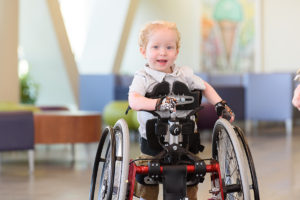 Orthopedically Impaired Services
Orthopedically Impaired Services
The SOESD provides physical and occupational therapy services to school districts in Jackson, Josephine, and Klamath counties. Under the Individuals with Disabilities Act (IDEA), physical therapy and occupational therapy are called “related services.” Related services are designed to assist a student to benefit from his/her special education program. School districts are required to provide special education to students who have both a documented disability and who need specially designed instruction. Thus PTs and OTs design programs or provide technical assistance concerning the motor needs of a student in his/her school setting.
A motor delay or a medical diagnosis confirmed by an evaluation does not automatically indicate a need for school therapy. There must be an adverse impact on a student’s performance or access to his/her education. School therapy must deal primarily with the impact the disability has on student function in the education program. A student who may have a suspected disability can be evaluated to determine if he/she is eligible for “special education” services. In addition a referral for physical or occupational therapy may be appropriate to determine if this service may help the student benefit from his/her special education program.
The SOESD also provides services to students who are severely orthopedically impaired. This program is state-funded and is known as the Regional Program for the Orthopedically Impaired. Physical and occupational therapists serve severely motorically impaired students in the school setting. Therapists provide consultation and instruction related to equipment needs and specialized procedures for lifting, feeding, or physical management.
Generally, school therapists provide services in four categories:
- School therapists evaluate the sensory motor functioning of students with disabilities and assist in determining needs.
- School therapists address access to education for students with disabilities and assist in determining service needs.
- School therapists address safety of students and school staff.
- School therapists help teach sensory motor skills associated with success in the education setting.
For more information contact Kathy Payne, Administrative Assistant, Regional Programs for the Orthopedically Impaired @ 776-8551 or Andree Johnson at andree_johnson@soesd.k12.or.us
Find out more about our staff and services
SOESD Occupational Therapists and Physical Therapists hold a Bachelor’s or Master’s degree in their respective fields. Some staff have gone on to earn a specialist credential in pediatrics. Physical therapy (PT) focuses on postural and gross motor functioning such as head control, sitting, and standing balance. Occupational therapy (OT) focuses on fine motor functioning such as acquiring and manipulating objects or tools to work or play in their school environment. Other areas covered in both PT and OT are activities of daily living (safe feeding, hygiene, and toileting), sensory motor skills, assistance with adaptive PE, reasonable and safe access to school environments, and assistive technology.
Often a PT and OT will work closely together to provide a comprehensive and supportive program either through direct service with the student or consultation for staff. Direct services include therapeutic intervention in educational settings with training and technical assistance provided to educational staff, students, and parents. Consultation involves review and evaluation of the student’s program, equipment recommendations, and inservice training.
In addition to the Regionally funded service, at district request and as supported by local contracts, direct and consultative PT and OT services are also provided to less severe students that the district or early childhood provider has determined would benefit from this related service.
Services Provided by Physical Therapists in School Environments
Therapeutic intervention as applied in the school is typically divided into these functional areas:
- Communication
- Self help
- Sensory processing
- Adaptive equipment
- Fine motor
- Functional mobility
- Environmental adaptations
- Positioning
- Neuromuscular and musculoskeletal systems
- Prevocational and Vocational skill
- Physiological Functioning
Often the student will receive intervention services in more than one functional area simultaneously. For example, a student who is learning to become independent in toileting may receive services in the following areas:
Communication – To signal when s/he has to leave the room to go to the bathroom.
Functional Mobility – To ambulate from the classroom to the bathroom and back. To transfer from a walker to the toilet and back.
Environmental Adaptations – To use grab bars, an adapted bathroom stall and adapted faucet.
Self Help – To clean self, unfasten and fasten clothing and to wash and dry hands.
School based PT/OT interventions are always related to the educational needs of the student. Consequently, depending on the educational needs of the student, a variety of PT/OT interventions are provided across functional areas.
A matrix of functional areas, intervention services and educational relevance is provided.
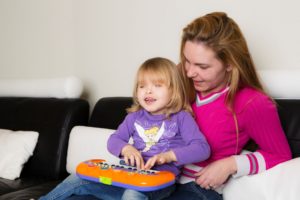 Vision Impaired
Vision Impaired
Itinerant special education services serving all identified blind, low vision, or deaf-blind children, birth through age 21, in the five-county Southern Oregon region. The program provides the following services: assessment of vision needs, ongoing inservice and consultation for classroom teachers and support staff, compensatory skills development (e.g. braille, orientation/mobility, use of appropriate assistive technology), equipment and materials (curriculum materials, educational aids), individualized instruction, home instruction and parent training, transition activities, and social and recreational opportunities to further communication and pro-social behaviors.
For more information, email: kristi_nelson@soesd.k12.or.us or call 541-245-5196.
View Eligibility and Referral Information
Eligibility Criteria Required assessment information:
- The student’s residual acuity is 20/70 or less in the better eye with correction; or
- The student has an eye condition or a progressive eye disease which is expected to reduce either residual acuity to either a level of 20/70 in the better eye or a visual field of 20 degrees or less in the better eye; or
- The assessment results of a licensed ophthalmologist or optometrist are inconclusive; or
- The student demonstrates inadequate use of residual vision.
In addition to the required assessment information above, the IEP team decides whether:
- The student’s disability has an adverse effect on the student’s educational performance (kindergarten through age 21) or has an adverse impact on the student’s developmental progress (age 3 through 5); and
- The student needs special education services; and
- The student’s special education eligibility is not due to a lack of instruction in reading, math, or limited English proficiency.
Referral A student suspected of a vision impairment must go through the referral process before they can be made eligible for services. School-age children can be referred though their local school district. Children age 0-5 may be referred by either their parents or an Early intervention program. If your child is receiving services from Early Intervention they will contact the vision program with a referral. A report from an eye specialist is necessary to complete the referral process. Services are available to any child, birth through 21 years of age, with a qualifying vision loss. A qualifying vision loss is generally a corrected acuity of 20/70 or less in the better eye or a visual field limited to 20 degrees or less. Any child, age birth through 21, with a verified or functional vision and hearing loss is eligible for deaf-blind services.
View Resources
The Needs and Rights of Children Who Are Blind or Visually Impaired
Prepared by the XIVth International Seminar on Preschool Blind June 1990
The impact of vision loss on the child and family must be understood and addressed.
Lack of vision limits much of a child’s ability to:
- know where he is and how to move from place to place.
- imitate and interact socially.
- understand what causes things to happen.
Children learn to play with others by watching, moving close to the action, and then joining in the game. A child who cannot see others playing, who doesn’t know how to move closer to them, and who has no way to find out how the game is played, often becomes isolated. As a result, this child may be perceived as withdrawn or developmentally delayed. Special training is required to understand the role that vision plays in development and to master the techniques for teaching the skills that deal with the effects of blindness and visual impairment.
Children who are blind or visually impaired and their families require early intervention services.
Childhood blindness or impairment has an impact on the entire family system. Services should begin as soon as a vision problem is diagnosed in order to encourage a child’s development and to prevent or minimize secondary conditions such as withdrawal, stereotypic behaviors (for example, eye poking, rocking), school failure and family stress.
Children who are blind or visually impaired and their families have a right to qualified instructors and specialists.
The people specifically trained to provide educational services to a child who is blind or visually impaired are:
- Teachers of the visually impaired.
- Orientation and mobility instructors.
Children who are blind or visually impaired and their families have a right to appropriate special services and instruction.
The following services must be integrated into a program that promotes independence for each child.
- Cognitive development opportunities (learning basic concepts, problem solving skills)
- Communication skills instruction (listening, turn-taking, personal expression, braille readiness)
- Gross and fine motor training (developing physical control and stamina)
- Low vision training (learning to use vision)
- Orientation and mobility instruction (learning to move independently in the environment)
- Parent education and family support (developing understanding, skills, and the ability to access personal and community resources)
- Recreation opportunities (enhancing creativity and enjoyment)
- Sensory training (learning to use the senses)
- Social skills instruction (learning skills for daily living and relationships)
What You Should Know About Blindness and Visual Impairment in Children
- The development of the child who is blind or visually impaired is highly individual, as it is with all children.
- Vision is the primary learning modality and source of information for most children.
- No other sense can stimulate curiosity, integrate information or invite exploration in the same way, or as efficiently and fully, as vision does.
- The child who is blind or visually impaired has many needs in common with all children. Among these are the needs for a sense of worth and accomplishment.
- Children who are blind cannot learn to do things by visual imitation. Children who are blind or visually impaired often require more “hands-on” experience, time, practice, and guidance in order to learn skills.
- More efficient hearing and a finer sense of touch, smell or taste do not develop automatically in an infant who is blind or visually impaired.
- Specialized training in the effective and efficient use of vision, hearing, touch, smell and taste can bring about increased skill in their use.
- Because most parents have not had the opportunity to know a child who is blind or visually impaired, they can often benefit from the assistance provided by trained professionals and other parents who have had such an experience, and adults who are blind or visually impaired.
- Many children who are blind or visually impaired have other disabilities.
- The relationship between blindness and other disabilities is complex. Assessment and programming become complicated and may require the services of a variety of disciplines.
- Instruction specific to their disability is essential for young children who are blind or visually impaired in order to meet their unique developmental needs.
The Opportunity To Be Equal
The opportunity for an equal education for blind and visually impaired students depends on the skills of qualified teachers, the availability of appropriate books and materials, plus providing the time needed for students to participate in specialized learning experiences.
Our local schools are fully prepared to meet the challenge of offering students without disabilities an equal opportunity to learn. But are they equally prepared and equipped to provide the same opportunity to learn to students who are blind and visually impaired?
In many cases, local schools have the specialized teachers, the adapted materials and books, and provide the instructional time needed for blind and visually impaired students to have an equal opportunity to learn. However, what if no qualified teacher of visually impaired students is available, or if not enough qualified teachers are available to meet all of the needs of the blind and visually impaired students. Will these students still have an equal opportunity to learn? And is an equal opportunity to learn being afforded to a student who needs ten hours of instruction weekly from a qualified teacher to learn braille but receives only one hour of instruction weekly?
At the Southern Oregon E.S.D. Program for the Visually Impaired, we believe that the opportunity for an equal education means that blind and visually impaired students must be provided learning experiences that are comparable to the learning experiences provided for sighted students.
- Vision loss permanently impacts learning, creating barriers that require specific solutions
- Students with a visual impairment are a diverse group
- Factors such as amount of vision loss, age of onset; and the presence or absence of other disabilities create the diversity.
- Literacy requires adaptation of media and specialized reading instruction.
The Right To Be Different
Offering an equal learning opportunity for blind and visually impaired students requires providing different educational materials and teaching methods than those provided for students without a disability. For example, blind and visually impaired students require a different reading medium: either braille, large print, or regular print with the assistance of an optical device. Also, students learning to read braille require completely different instructional strategies and teaching techniques than those that students learning to read print require. Even the manner in which blind and visually impaired students learn simple concepts such as large and small; tall and short; and hot and cold is different from how sighted students learn these concepts.
As educators, we know that a vision loss profoundly impacts learning. But we know that the impact on learning doesn’t need to result in a delay in. or a lack of educational opportunity. And we know what makes the difference: having qualified teachers, using very special materials and equipment, and providing sufficient instructional time for students to learn. These conditions are requirements for blind and visually impaired students to achieve the same educational results as sighted students achieve without adaptations.
Blind and visually impaired students must have the right to be different: to read in a different medium, to use devices to assist them in traveling through their environment, to use different materials, and to learn through different instructional methods. Blind and visually impaired students are entitled to an opportunity for an equal education. And they have a right to receive that education in a different manner, with different techniques, and in different educational settings.
View Staff & Services
The Program for the Visually Impaired provides free, itinerant, special education services for all identified students, birth through age 21, who are blind, deaf-blind or have low vision and live in these Southern Oregon counties: Jackson, Josephine, Douglas, Lake and Klamath. The program provides:
- Assessment of needs.
- Ongoing inservice and consultation for classroom and support staff.
- Compensatory skills development (e.g. braille, orientation and mobility and assistive technology).
- Equipment and materials (curriculum materials, educational aids, CCTV’s and large print materials.
- Individualized instruction.
- Home instruction and parent training.
- Transition activities.
- Social and recreational activities to further communication and enhance social skills.
There are four full-time and three part-time teachers of the visually impaired. Three of these teachers are certified to teach orientation and mobility.
The program for the visually impaired also employs five braillist/compensatory skills assistants, four of whom are certified by the National Library of Congress. This assures that students receive national certification quality Braille materials. Braillists are based in three production centers. Each production center is fully computerized with braille translation software, scanners, braille embossers, and printers.
In addition to braille and large print production, braillists support teachers of the visually impaired by assisting in the instruction and practice of compensatory skills with students. The program has three offices/production centers located in Phoenix/Talent, Grants Pass, and Klamath Falls. Supervision is provided by a program coordinator who is trained in the fields of vision impairment and orientation and mobility. The following are services that are offered to students who qualify for services:
- Visual Efficiency
- Communication
- Orientation and Mobility
- Socialization
- Daily Living Skills
- Sensory-Motor Skills
- Use of Adaptive Aids
- Knowledge of Eye Condition
- Concept Development
- Technology
- Career Education
- Vision Stimulation
- Compensatory academic skills
Contact Information
All inquiries regarding general program information should be directed to Mark Moskowitz, PVI Program Coordinator: 541.245.5196 or email mark_moskowitz@soesd.k12.or.us
Specific area questions:
- Medford/Jackson County 541.245.5196
- Grants Pass/Josephine County 541.479.5135
- Roseburg/Douglas County 541.440.4783
- Klamath Falls/Klamath and Lake County 541.850.1138
View FAQs
Frequently Asked Questions
- Do you use sign language? No, we teach Braille. However, if the student is deaf/blind we coordinate with the Program for the Deaf and Hard of Hearing and may use some form of sign language.
- How does that blind person know how to cross the street at the right time? Orientation and Mobility Specialists, who are also Teachers of the Visually Impaired, teach students how to be safe, efficient travelers using all of their senses other than vision.
- Do blind people use radar like bats? People with visual impairments use a multi-sensory approach to gather information while traveling. A person who is blind may identify objects by interpreting sounds in the environment.
- Is it true that blind people have perfect pitch or extra sensitive hearing? No, people with a visual impairment learn to develop all of their remaining senses with proper training from qualified teachers of the visually impaired.
- At what age do you start working with children? Teachers of the visually impaired start working with children from the age of identification. This can be as early as birth through the age of 21.
- Do you just teach Braille? No, we teach academic skills in conjunction with the local school district. In addition, we teach social skills, living skills, orientation and mobility and adaptive technology.
 Deaf and Hard of Hearing Services
Deaf and Hard of Hearing Services
Direct instruction and consultative services are provided by teachers of the deaf and hard of hearing to eligible students birth through 21 in the five counties of Southern Oregon. Itinerant and resource classroom teachers deliver instruction through infant/parent home intervention programs, preschool, elementary and secondary levels. Direct instruction includes language, auditory compensation, cognitive development, reading/comprehension skills and academic subjects based on the district’s curriculum and the student’s needs. Communication and Language mode is individualized for each student. Communication approaches include total communication, spoken English, ASL, signed English, augmentative communication, or alternatives depending on a child’s specific needs. Interpreting services are provided by highly skilled sign language interpreters with sign systems based on student needs. Assessment, audiology, assistive technology, transitional support, training in communication, the psychology of deafness and Deaf culture, including socialization opportunities, are provided to students, parents, school staff, and community members.
For more information, email: pdhh@soesd.k12.or.us or call 541-245-5196.
View Eligibility and Referral Information
Referral
Services from the Program for Deaf/Hard of Hearing are available for any child between the ages of birth-21, with an educationally significant hearing loss. When a hearing loss is suspected, a referral can be made to PDHH through the child’s resident school district or Early Intervention Program. A parent, an educator, an audiologist, or anyone who is knowledgeable about the child may make a referral. The referral to PDHH must include an audiological evaluation (hearing test information), a completed physician’s statement form, and signed consent for evaluation form and signed release of information from the parent or guardian of the child. A teacher of the DHH will gather information about the child’s language development, speech skills, academic achievement, and auditory skills, using a variety of tests and observations. Once this information is collected, an Eligibility meeting will be held to determine whether the child is eligible for special education services.
Eligibility
An Eligibility team consisting of a teacher of the deaf, a regular educator, the parent and a district representative review the child’s audiogram and developmental information. The pure tone average hearing loss must be 25dB or greater in the better ear at 500Hz, 100Hz, and 200Hz, or 35dB or greater in the better ear for frequencies of 3000Hz, 4000Hz, 6000ZHz. A child with a unilateral hearing loss will be considered for eligibility if the pure tone average loss is 50dB or greater in the affected ear for the frequencies 500Hz to 4000Hz. Once it is determined that the hearing loss is not medically treatable and meets one of the eligibility requirements, the IEP team will review the developmental information. The team will decide whether the hearing loss has had an impact on the child’s developmental or educational progress and whether specialized instruction is necessary. If the team decides that the hearing loss does have a significant educational impact, an Individualized Educational Plan (IEP) meeting is held to discuss the child’s specific educational needs and to write an individualized educational plan.
View Deaf & Hard of Hearing Resources
ASL/Deafness Links
These links are provided for informational purposes only and do not imply any affiliation or endorsement. Some links could fit into more than one category. If links are broken, inactive or lead to the wrong site. Please contact the PDHH Resource Administrator.
Some sites require Quicktime, RealPlayer, Adobe Reader, Windows Media Player, and/or Adobe Flash/Shockwave player. All of these programs can be downloaded for free. We encourage you to check your plugins on the ESD plugin test page.
VLOG/BLOG/VIDEO
- OICmovies.com – News and information in American Sign Language. Practicing your sign-to-voice skills, or looking for new signs? This site provides you with frequently updated videos in ASL.
- Deafnewsdaily – Signed news and events. This site provides interpreters/parents an opportunity to see sign language in use and view new signs from around the world.
- ideafnews – Signed news and events. This site provides interpreters/parents an opportunity to see sign language in use and view new signs from around the world.
- Joey Baer Vlog – ASL video blog, new way to see what is going on in the deaf community.
Online Dictionaries
- RIT – Math and Science signs
- ASL Source – Country Signs
- ASLpro.com – Instructional and educational website used primarily for dictionary and vocabulary. Requires Quicktime.
- Texas Math Sign Language Dictionary – Math signs to help students, teachers, parents and interpreters.
- Deafhealth.org – Medical issues and terminology presented in ASL. Requires Quicktime.
- ASL Browser – Hundreds of videos of signs, listed alphabetically. Requires Quicktime.
- ASL University Online Dictionary – Various signs listed alphabetically, explained with words and photos.
- Embe Outreach – Features video clips containing ASL vocabulary that is generally going to be presented in specific academic classes in elementary school through high school. In many cases, the videos include using the vocabulary in an ASL sentence. Requires Quicktime.
- Signing Savvy Dictionary
Interpreter Resources
- ESD Interpreter Lending Library list 2016 – Please download the Loan Agreement and send in the hard copy to the Grants Pass ESD office Attn: Lending Library. To make your Lending Library request please email the Lending Library specialist.
- SOESD Media Materials Library Client Login – Access to many of the videos you may find being presented in you classrooms.
- Boys Town Workshops – Register for the Boys Town EIPA video conference training workshops at the ODE website. You will find dates, times, locations and the registration access portal.
- APPs – We will be building this area as more APPs are sent in. Please send in your favorite APPs for interpreting and we will add them to the list.
- EIPA written tests, What to study! – Here is an outline with some suggestions from Boys Town on how to study for the EIPA written exam.
- EIPA Written – The information on this site will help answer some questions you may have about the EIPA written test.
- EIPA (Educational Interpreter Performance Assessment) – The information on this site will help answer some questions you may have about the EIPA performance test.
- EIPA Sample Evaluation Report – Shows you what the results and feedback will look like.
- EIPA Rating Form – Shows the interpreter how they will be evaluated on the assessment.
- Nigel Howard – ASL Youtube videos can be very helpful in providing interpreters with dependable models showing proper use of space and classifiers. Nigel Howard has some videos that were created by the CATIE Center at St. Catherine University. (Must have youtube access to view video.
- Kevin William’s training videos are available online again. He is one of the authors of the EIPA and he is the guru for K-12 interpreting. I encourage anybody wanting to understand more about educational interpreting and the EIPA to watch some/all of his videos.
- NCIEC – National Consortium of Interpreter Education Centers, Providing information related to Interpreters.
- Top Notch Interpreting – Web site with interpreter related info.
- ASL University – Various lessons and resources, for free.
- Think Workshop – ASL Fingerspelling and Initialization
- Fingerspelling – Practice your receptive finger spelling skills online.
- Online Workshop – Perpetual Development, LLC is dedicated to providing professional development opportunities for sign language interpreters.
- Wink Workshop – online educational opportunity
- Quizlet – Increase your academic ability
- Lumosity – More academic training
- Deaf Newspaper – ASL video clips. Requires Macromedia flash 7.
- ESD How to Videos – Here you will find helpful videos on how to setup your Google Drive account and how to share your videos with your ESD Mentor.
Teacher Resources
- Kahoot.it – multiple choice, interactive, game making website. Challenge your class and see who has been paying attention. Kahoot.it was shared at the January PDHH teachers in-service.
- Deaf Education Info – Deafed.net offers additional resources and current information.
- IDEA – Link to official documents.
- Described and Captioned Media Program – Open captioned media on a wide variety of topics – from Arts to Science to History. It is free to those who work with or are related to Deaf/Hard of Hearing individuals. Some media available for online streaming. Great for teachers, interpreters and parents. Includes extensive section on Deafness & Sign Language.
Parent Resources
- Hands and Voices – “Who are we? We are parents of ASL signers, cued speech users…. parents of kids with cochlear implants or total communicators… we are people who have common interests connected through the community of deafness.
- Healthy Hearing – Hearing Aids and Hearing Loss Help and information.
- Deaf Resource Library – Various articles and information about deafness, ASL and Deaf culture. This site is a good resource for anyone to use.
- Just for (Deaf and Hearing) Kids – Links to organizations and web sites for deaf/hard of hearing kids, as well as hearing kids with some connection to deafness.
- Deaf Culture
- Deafness/Hard of Hearing at about.com – Many articles and links to various issues dealing with Deafness/Hard of Hearing.
- DeafNation – The latest news in the Deaf and Hard of Hearing community. Requires Windows Media Player.
- SignWriting – Read and write sign languages!
- Lessons – Learn how to read and write SignWriting.
Communications
- Telephone Relay Services – Relay numbers by state.
- How to use TRS – Instructions on how to use the Telephone Relay Service
- TypeWell – Educational Transcription System.
Foreign Sign Language Dictionaries
- BSL Alphabet Coloring Pages
- British Sign Language
- LSF – French Sign Language Dictionary of words in alphabetical order.
(It is estimated that about 60% of ASL & LSF are mutually intelligible.) - Manos Que Hablan – Sign dictionary by alphabet and category. Also has fingerspelling alphabets from various countries. English translations are not given.
- German Sign Language – This dictionary uses drawn pictures. English translations are not given.
- Fachgebärdenlexikon Hauswirtschaft – Mostly words to do with housekeeping. Requires Quicktime.
- German Sign Language of Psychology– English translations are not given. Requires Quicktime.
Other Foreign Sign Languages
- Arabic Sign Language – Keyed to English words – use the links for the manual alphabet.
- Croatian Sign Language – English translations are not given. Requires Windows Media Player.
- Flemish Sign Language – English translations are not given. Requires Windows Media Player.
- Flemish Sign Language Dictionary – This site has an English version.
- Indian (Native American) Sign Language – Described by words and drawn pictures.
- American Indian Sign Language – Videos of Native Americans using sign. (With voice interpretation)
- Sign Language Alphabets from other countries – From deafblind.com
Long Term Care and Treatment (LTCT)
Long Term Care and Treatment (LTCT) provides education programs for students who have been placed by state agencies, school districts, or private placement in day and residential treatment facilities. The goal of Long Term Care and Treatment Education Programs is to provide a high quality, therapeutic environment where children will gain the behavior skills and abilities to function successfully in a non-institutional environment.
For information, please contact Susan Peck at susan_peck@soesd.k12.or.us or 541-776-8555.
Special Education Automation Software (SEAS)
SEAS is a 100% web-based product comprised of several modules which together allow districts to manage their special needs programs, including: IEP & forms management, timeline compliance, Medicaid claim generation, assessment reports, and more. Participating counties: Jackson and Klamath.
Access your district’s Special Education Automation Software (SEAS) special education management system by following the links below:
Klamath County School District
www.seasweb.net/orklamathcounty
Butte Falls School District
www.seasweb.net/orbuttefalls
Phoenix-Talent School District
www.seasweb.net/orphoenixtalent
Pinehurst School District
www.seasweb.net/orpinehurst
Prospect School District
www.seasweb.net/orprospect
Rogue River School District
www.seasweb.net/orrogueriver35
SOESD
www.seasweb.net/orsoesd
 OR Project
OR Project
The Oregon Project for Visually Impaired and Blind Preschool Children (The OR Project) is a comprehensive curriculum designed for use with children birth to six who are visually impaired or blind. Availability: Worldwide. The sixth edition of the OR Project includes several significant changes. Approximately 200 additional skills were added, totaling more than 800 distinct developmental skills, each with corresponding teaching activities. This new edition provides computer graphing of an individual child’s profile to clearly depict the child’s strengths and areas for instruction. The OR Project can be used with any child functioning at developmental levels between birth and six years. Click here to learn more.
